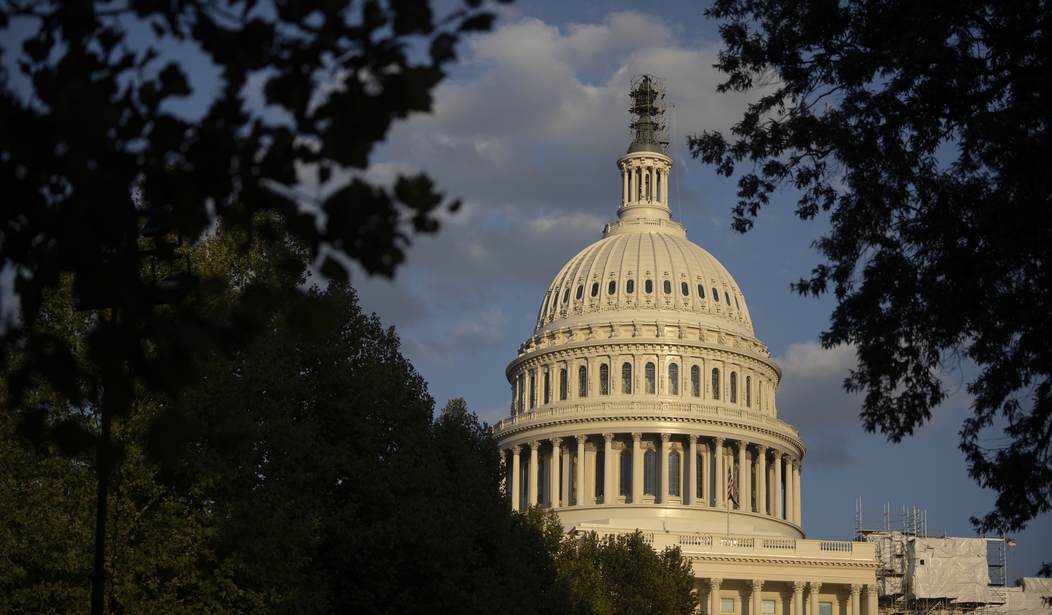With January’s continuing resolution set to expire Friday, Congress gears up for another spending battle and potential showdown. Oddly enough, members of the House Freedom Caucus are currently pushing for another continuing resolution. But they are doing so because passing another continuing resolution will automatically trigger spending cuts. Normally disparaged as “kicking the can down the road,” this resolution could lead to much-needed belt tightening.
The Freedom Caucus normally advocates for a return to “regular order,” in which Congress passes 12 annual appropriations bills separately, which has not happened since 1996. They argue that the dependence on continuing resolutions and omnibus bills has weakened Congress’ power of the purse and given congressional leadership greater power over the budget.
If an omnibus bill gets passed before March 1, it will undo the work of returning to regular order. Since January 2023, the House has passed seven of the twelve appropriations bills, but the Senate has only passed three. Members of the House are hoping to buy time to return to regular order.
In addition, as part of the debt ceiling agreement in 2023, if Congress fails to pass all twelve appropriations bills by April 30, 2024, an automatic 1% spending cut for the entire federal government will take effect.
The 1% spending cut will hardly be enough to counter the fiscal irresponsibility of Washington, but it could lead to serious discussions about how to limit spending. Without genuine structural reforms, however, we are headed toward a fiscal crisis.
In the Financial Report of the United States Government, the Treasury department has even admitted, that “current policy under this report’s assumptions is not sustainable and must ultimately change.”
Recommended
The solution is not collecting more taxes. Research shows, over the past twenty years, federal spending has outpaced revenues. Even major tax increases, without spending reforms, will have minimal impact on deficits.
The lion’s share of spending growth comes from entitlement programs such as Social Security, Medicare, and Medicaid. These entitlements make up 56% of all federal spending. In addition, interest payments on the national debt are now the second highest spending category in the federal budget. The more money the federal government diverts into debt payments, the more it will desperately look to collect taxes.
This unsustainability has not gone unnoticed. Last year, Fitch Ratings downgraded the U.S. credit rating from AAA to AA+, the second time in the nation’s history, and Moody’s Investment Service changed the U.S. credit outlook to negative. Lower credit ratings portend higher interest costs, meaning the $34.4 trillion in national debt will continue to skyrocket.
Before lawmakers in Washington dare to touch Social Security or Medicare, they will likely pass the buck to state and local governments forcing them to start paying more for these federal programs. Recent data shows that federal funds make up 38% of the average state budget so federal cuts will spell higher taxes and painful spending cuts at the state and local level.
While there is no panacea for these fiscal woes, there are numerous solutions available. Lawmakers from both parties in the House of Representatives have proposed legislation supporting a fiscal commission. If passed, the commission would engage in budget reforms with the goal of stabilizing the debt-to-GDP ratio to no more than 100% within 10 years. However, without certain constraints, such as requiring a joint House and Senate resolution to oppose a budget cut, any commission would be rendered ineffective.
Another promising idea is a fiscal rule on Congress limiting spending to the growth of population plus inflation, like the Colorado Taxpayers’ Bill of Rights (TABOR) amendment. A constitutional amendment limiting spending growth will create fiscal discipline even when members of Congress don’t care about fiscal responsibility.
But while ideas abound, courage is in short supply in Washington. Rather than cutting spending, it’s likely lawmakers will look for gimmicks like leaning on the Federal Reserve for spending through money creation. Therefore, the Fed must be bound by clear rules about controlling the money supply to stop interference from politicians.
Ultimately, lawmakers in Washington need to see the writing on the wall: a fiscal crisis is headed our way unless they have the courage to make hard choices. I don’t have great confidence that they’ll do what needs to be done, but using a continuing resolution to trigger automatic spending cuts is at least a good start.
Thomas Savidge is a Research Fellow at the American Institute for Economic Research.























Join the conversation as a VIP Member